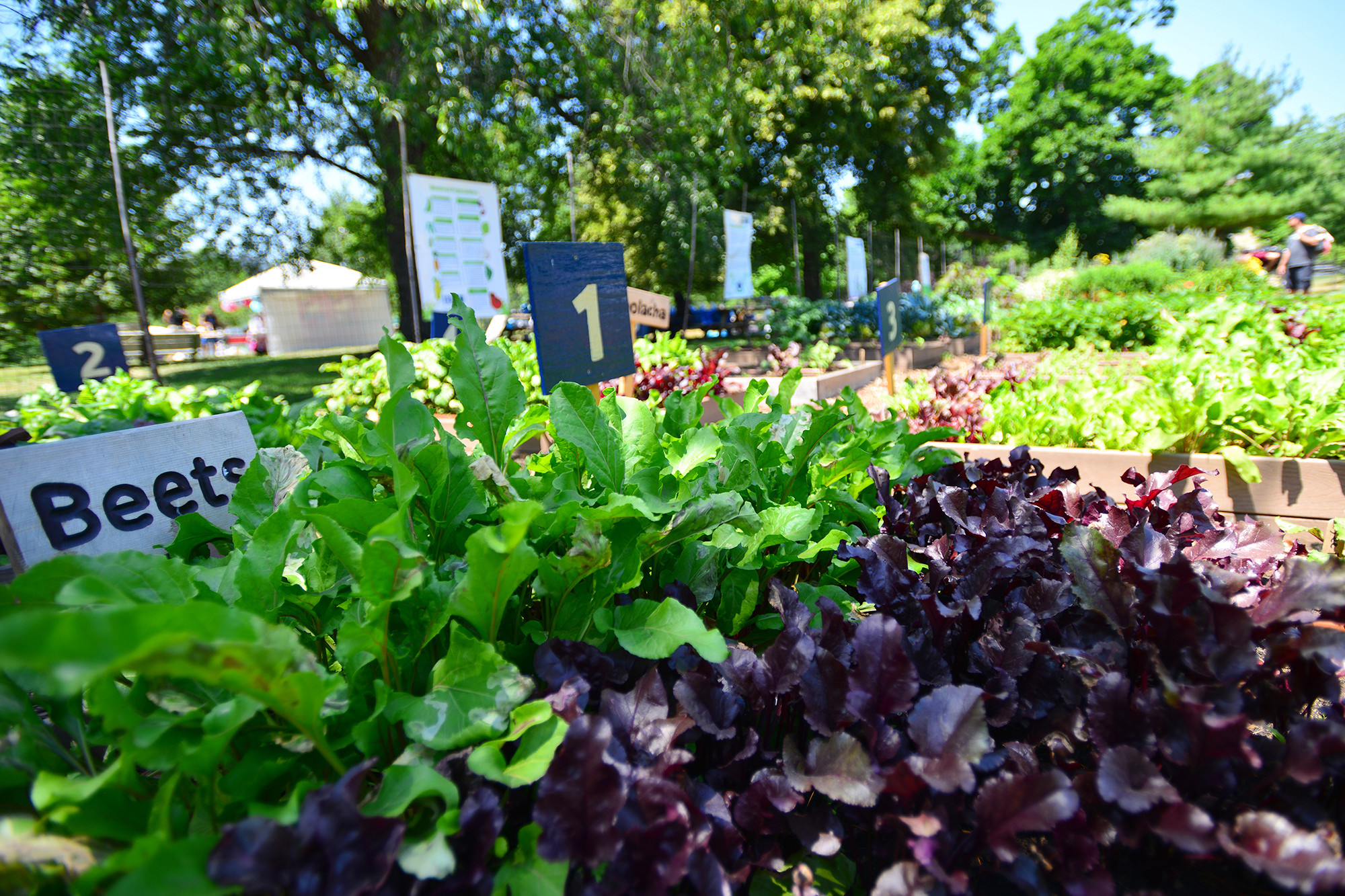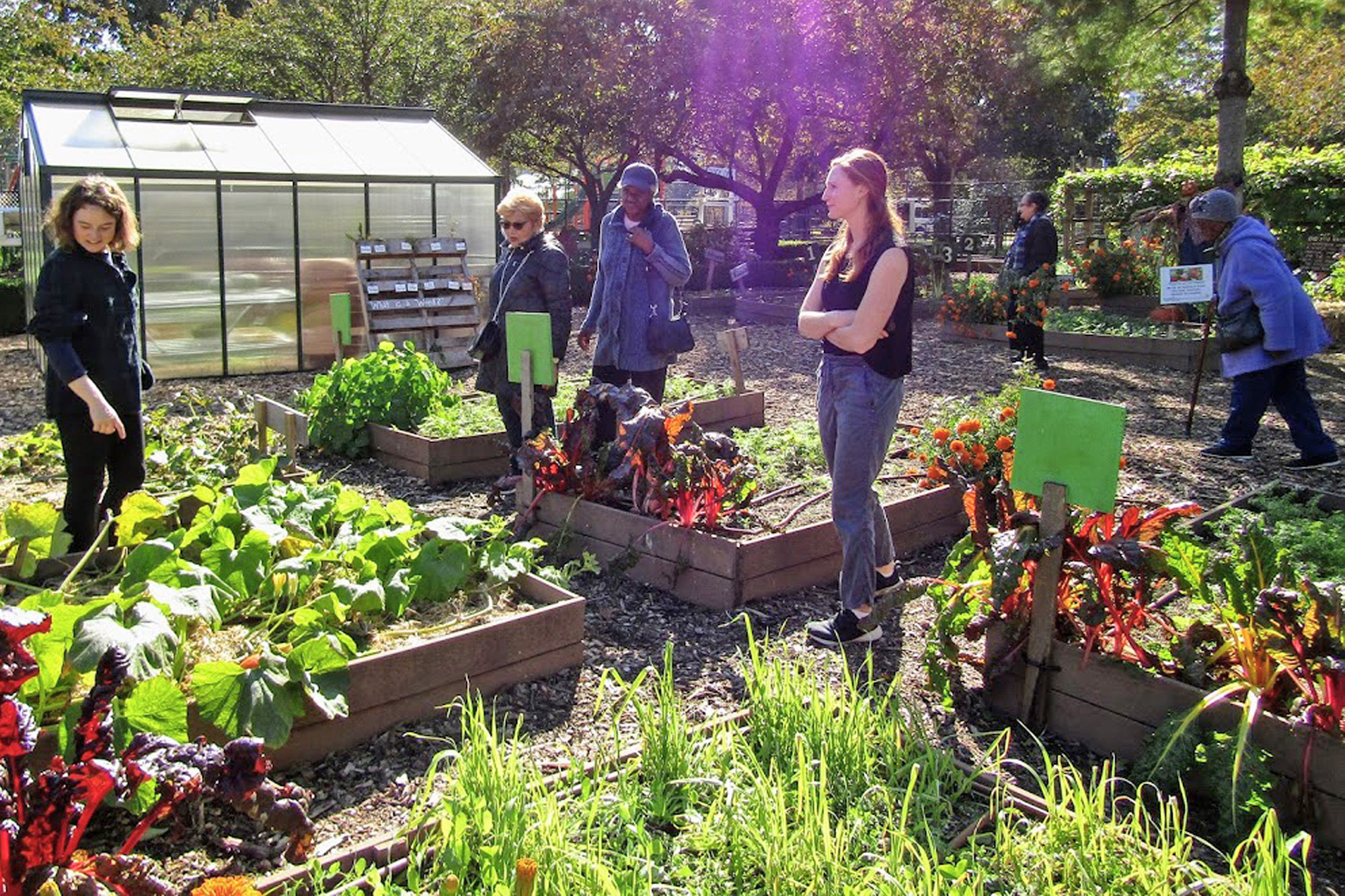September has hit New York, and that means the air is getting cooler, the subways are getting slightly less sweaty and we can all resume arguing whether pumpkin-flavored things are good. It’s the time of year that makes us start thinking of farm life, getting the flannel out of the closet and hitting a hayride.
You might be thinking that farms and New York City go together like good pizza and rural Iowa. But the city’s farm history dates to its founding. Orchard Street was once an actual orchard and in the 17th century, the Bowery was called Bouwerij, the Dutch word for farm. Today, farming in the Big Apple is making a big comeback.
You just have to look around a little — or sometimes, look up — to find it. A new wave of urban farms are inviting city dwellers to get back to their roots, literally, this fall, and teach all of us why vibrant green space is so necessary in the growing city. Here’s how New Yorkers can get dirty — in a good way — and get some hyper local produce without leaving the five boroughs.
Battery Urban Farm
The farmers on this patch of parkland nestled in the southern tip of Manhattan have to deal with something even their most seasoned rural counterparts don’t encounter: shadows from skyscrapers. The hidden little garden hosts about 40 rows of plant beds, sprouting tomatoes, peas, kale, radishes, carrots, herbs, sweet peppers and more. The farm opened in 2011 and is tended weekly by a team of volunteers, but its open gates welcome in lots of tourists on their way to catch the ferry to the Statue of Liberty.
Mary Beth Rogan started volunteering at the farm last year after moving from, appropriately, Garden City, LI, to Tribeca and realizing she missed her home garden. She’s retired and finds peace at the space, even when she’s just pulling weeds out of one of the vegetable beds as noisy tour buses roar by the park.
“I love being in the dirt,” she says. “There’s a sense of tranquility, of being connected to the earth, to the world.”
The site is also a teaching garden for city students; a few get their own patch of land to tend in the park. The veggies grown here are served to kids, and donated to local charities. State Street and Battery Place, open every day; check Web site for volunteer opportunities
Brooklyn Grange Sunset Park
Brooklyn Grange has been leading the way in turning New York rooftops into lush farmlands over the past decade. Its newest outpost, which opened in Sunset Park last month, is now the largest rooftop farm in the city. The site is an oasis on top of a building that contains a Bed Bath & Beyond and other stores, with 140,000 square feet of tomatoes, peppers, kale and more, marked with colorful bursts of sunflowers and other flowers. The effect is so transformative it’s easy to forget you’re in NYC, until you look up and see crops perfectly framing the Statue of Liberty in the distance.
Bring your date: It’s a perfect mix of the urban and rural, especially John Epifanio, 44, who grew up in suburban Connecticut and says he occasionally hits a “tipping point” where he needs to escape the claustrophobic city. His girlfriend, Niki Roger, surprised him with a date to the farm on a recent sunny Sunday.
“Just having the backdrop of the city with that kind of contrast between agriculture and then the most defined urban background you could possibly see, I thought it was really stunning,” he tells The Post.
The new site uses 4 million pounds of soil; in total, Brooklyn Grange’s three farms yield 80,000 pounds of produce a year to sell to local restaurants and at farmers markets. At the weekly open houses on Sundays, you can take a guided tour of the space ($ 18) or visit for free and buy produce from the rooftop market. The new farm is expecting to host more events in the spring, but in the meantime, you can check out its other locations in Long Island City and at the Brooklyn Navy Yard, which host rooftop yoga, dinner parties, workshops and more.
What’s in season? The end-of-summer bounty at the market includes tomatoes, cucumbers, peppers, kale, eggplant and custom-made hot sauce. 850 Third Ave., Brooklyn; open to the public Sundays through the end of October, 11 a.m. to 4 p.m.
Queens County Farm Museum
The Queens County Farm Museum’s famous Halloween-season corn maze is far more fun, and easier to solve, than the underground labyrinth of Penn Station. But the site also sits on the largest remaining tract of undisturbed farmland in the city, with 47 acres of farming history dating to the 17th century.
It’s a great spot for a family-friendly outing this fall, with the Queens County Fair and pumpkin picking kicking off later this month. But you can also tour the premises to see the farming, livestock and machinery up close, and enjoy the fruits of the land at its farmstand.
What’s in season? The fall harvest here includes kale, lettuce, sweet potatoes, watermelon, squash, radishes and more. And this year, the maze will be crafted in a familiar shape: the famed Unisphere from the World’s Fair site. 73-50 Little Neck Parkway, Queens; open daily, 10 a.m. to 5 p.m.
Randall’s Island Urban Farm
The farm on the island, sandwiched between East Harlem and Astoria, feels like a true oasis away from the city. It has 100 raised beds growing veggies and flowers. The farm also grows specialized items to get kids excited about farming, including a cucamelon: a tiny cucumber that looks like a little watermelon.
“Exposing young people and adults to this shows that it is possible to have this type of experience in New York,” farm manager Ciara Sidell says. “It opens people’s minds to what they could be doing in their own lives.”
Worth the trip: On Sunday, the park is hosting an urban farming bike tour, which will roll through the NYC Parks 5-Borough Green Roof, a 45,000-square-foot garden on the island, and the Randall’s Island Urban Farm itself. It’s free; just BYO bike. Wards Meadow Loop, Randall’s Island. Visit during the open house from 11 a.m. to 5 p.m. on Saturdays and Sundays, with “Art on the Farm” activities from 2 to 4 p.m., through mid-October
Hellgate Farm
Hellgate may be the most badass name for a farm in the city, but it’s actually not one site, it’s a whole network of rooftop and residential gardens across Astoria and other parts of Queens. Founded in 2011, the project turns underutilized plots into environmentally friendly green spaces and productive gardens, selling produce at local markets and through a subscription service. Converting concrete to green space is something environmentalists say is key to capturing carbon dioxide in the city and absorbing rain, which helps keep the waterways clean.
Get your hands dirty: Hellgate Farm offers to teach you the ins and outs of rooftop farming through classes, an apprenticeship program and volunteer days. Check the Web site for more info before the growing season ends in October; various addresses in Queens




